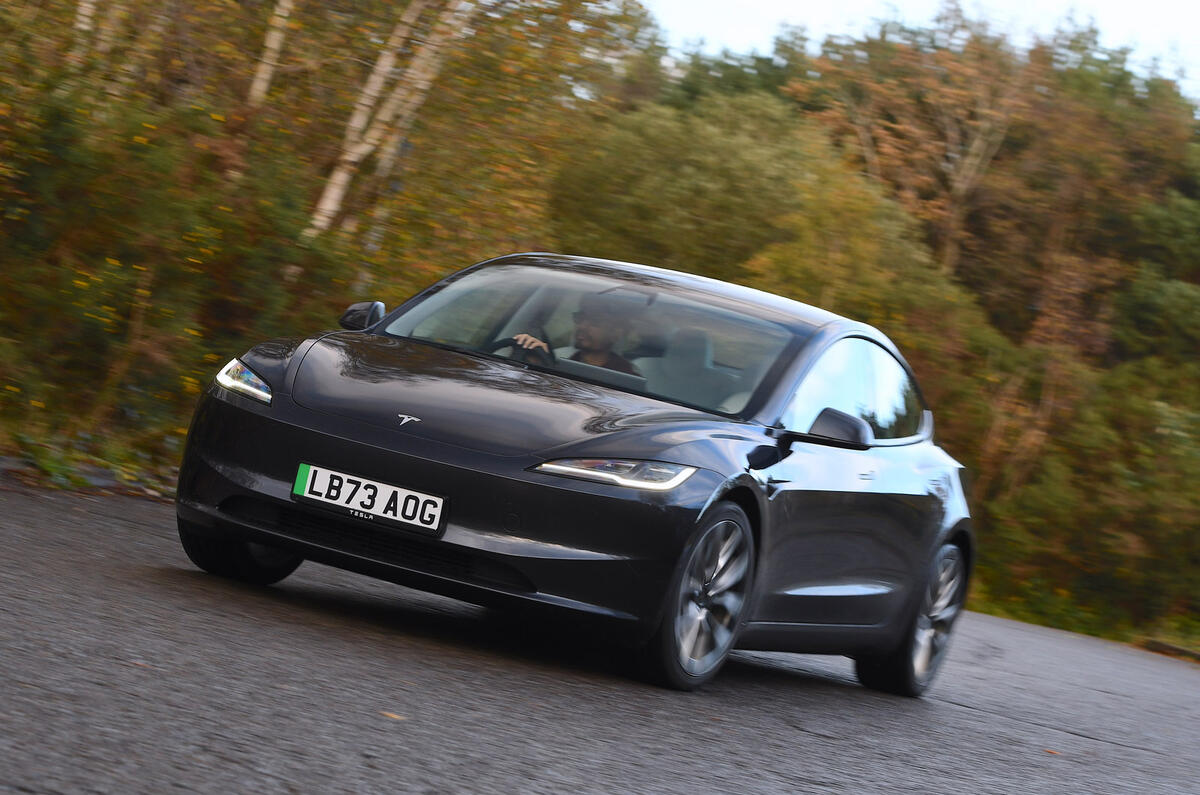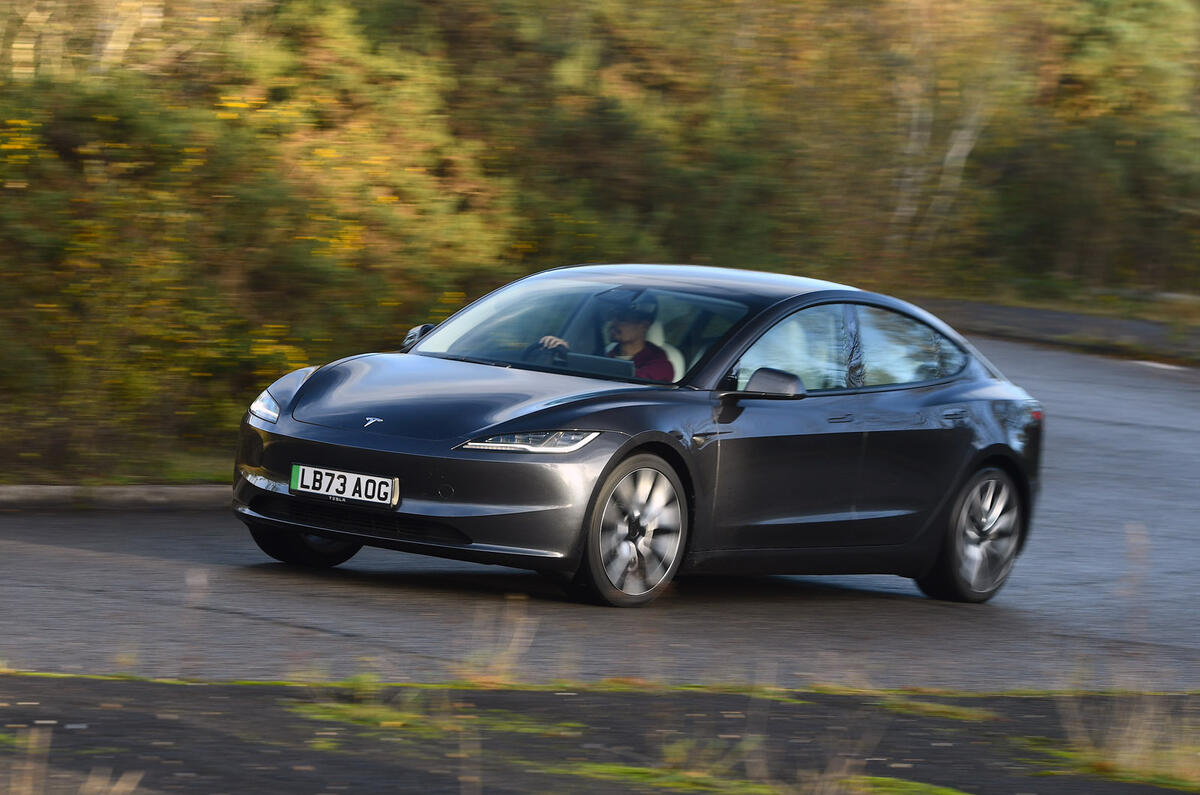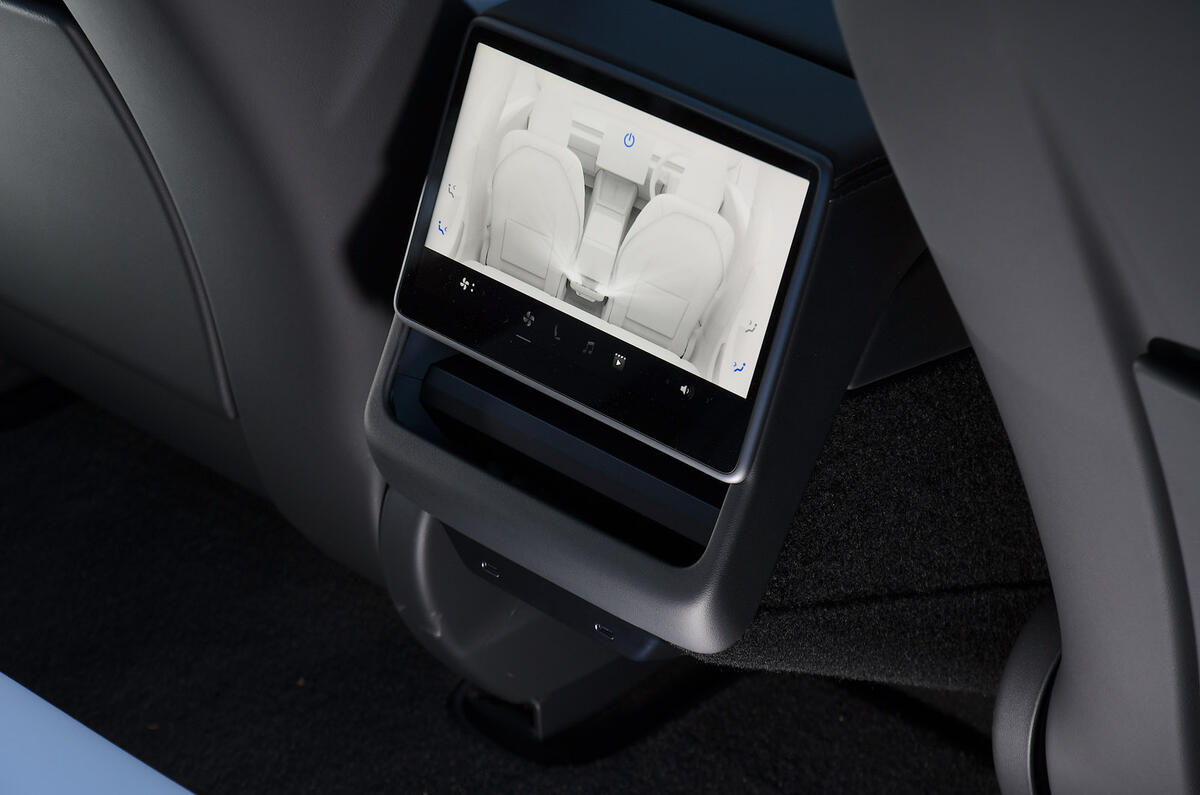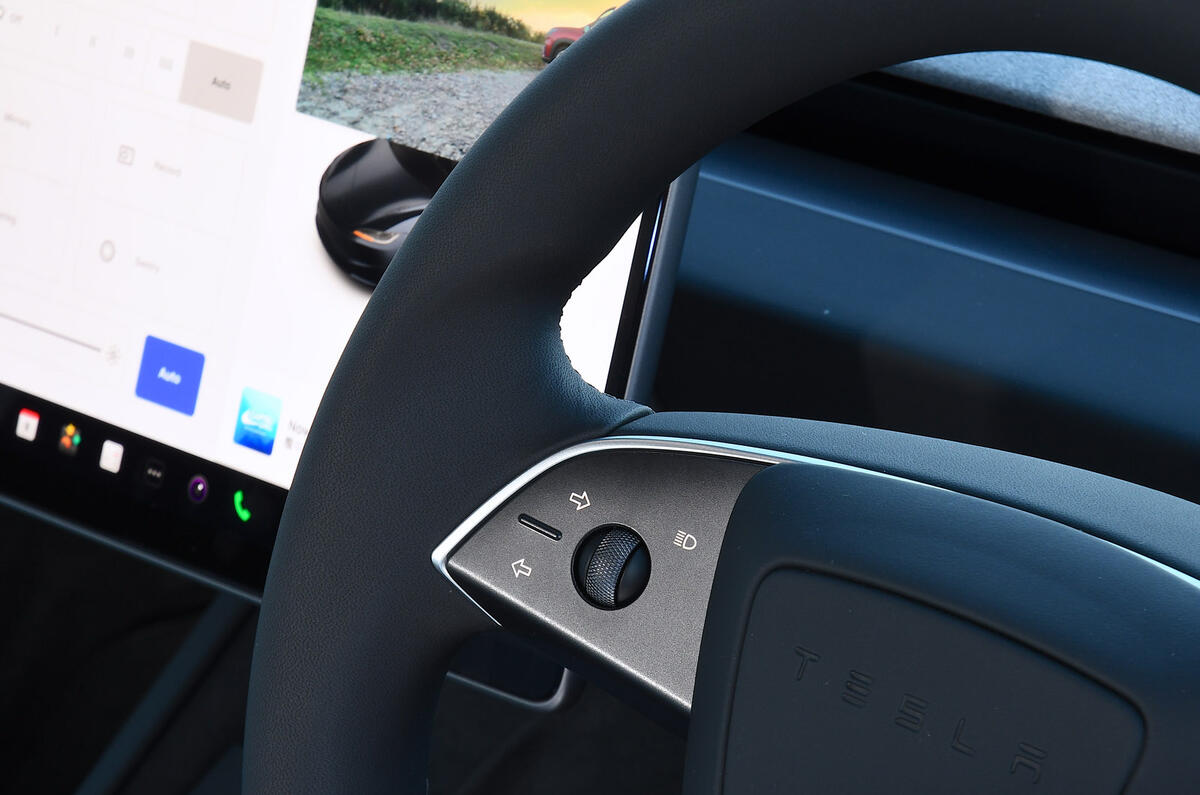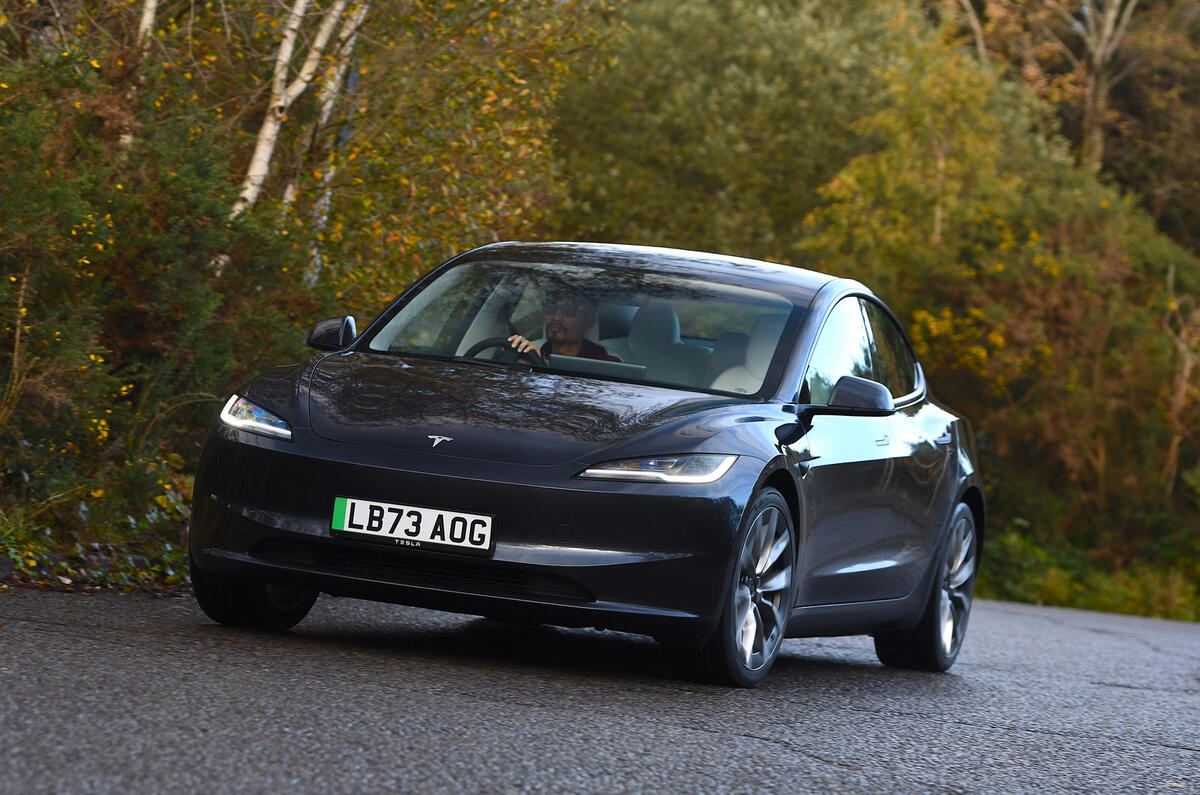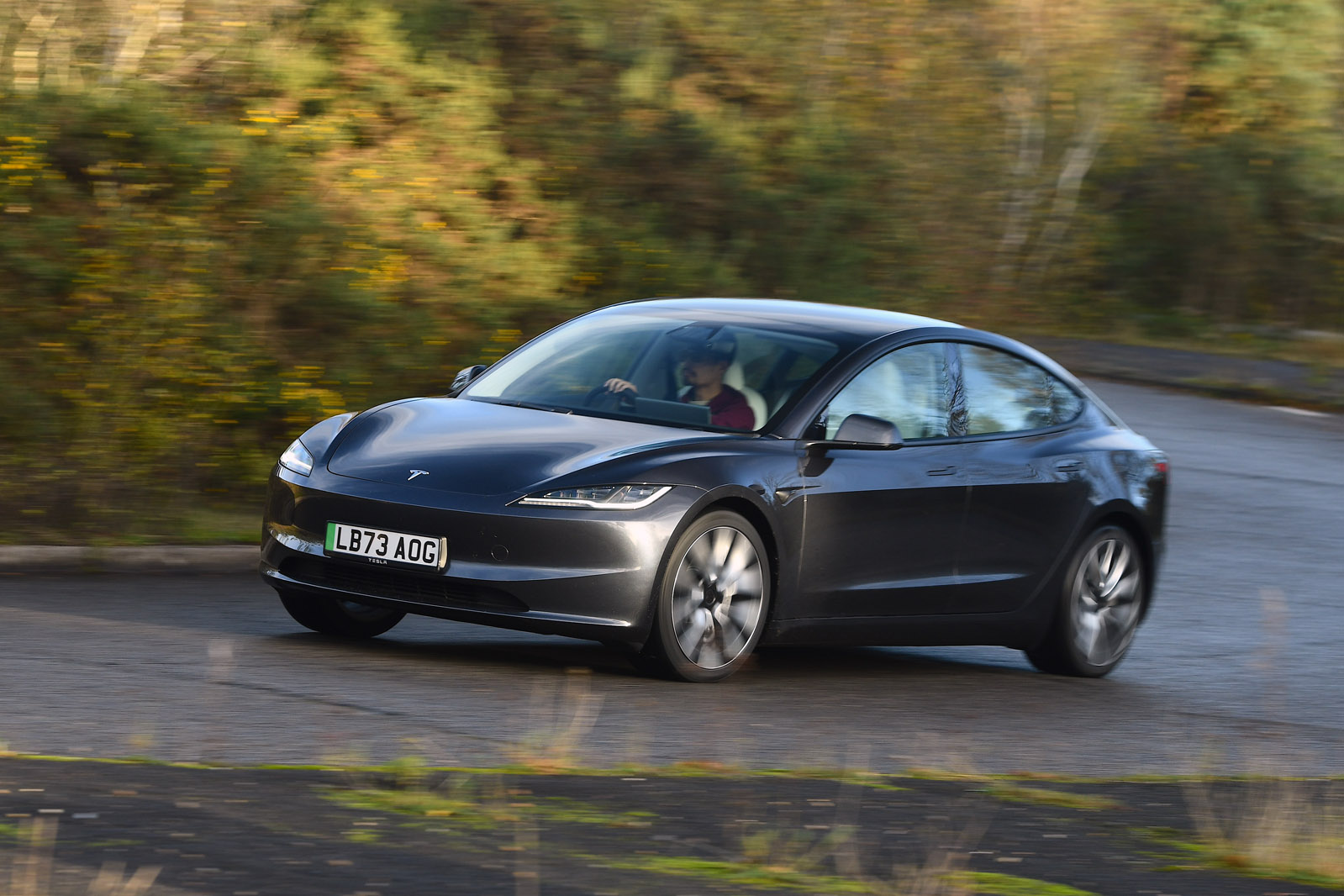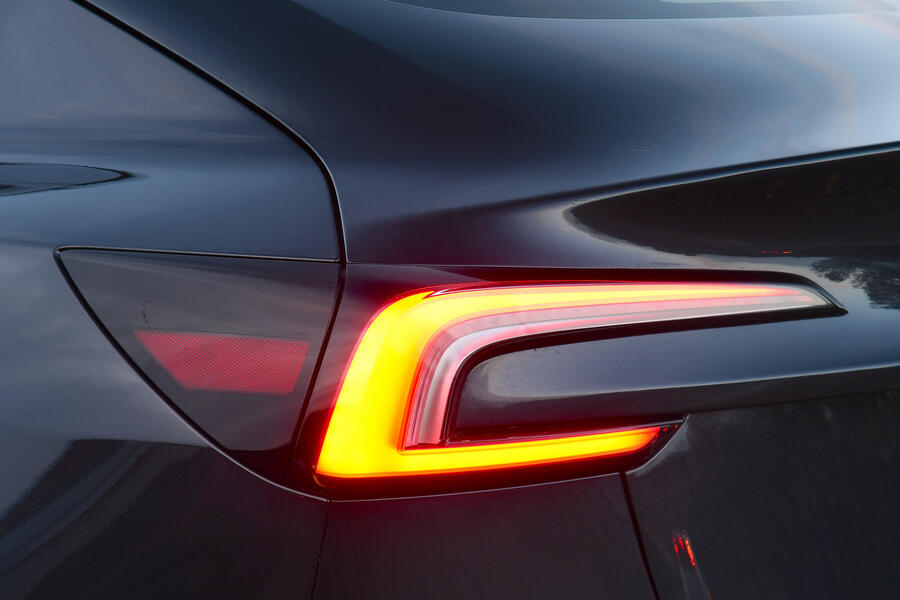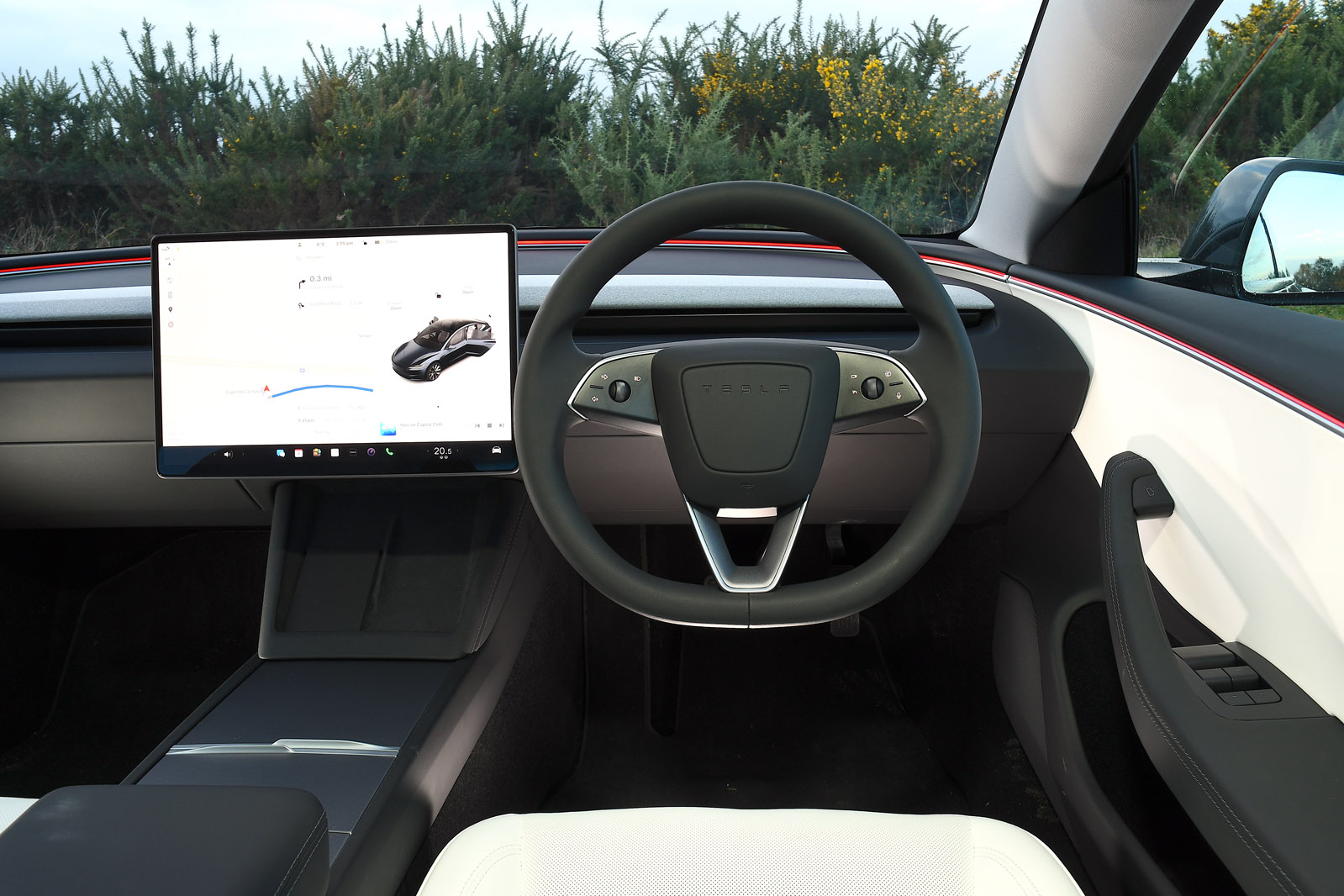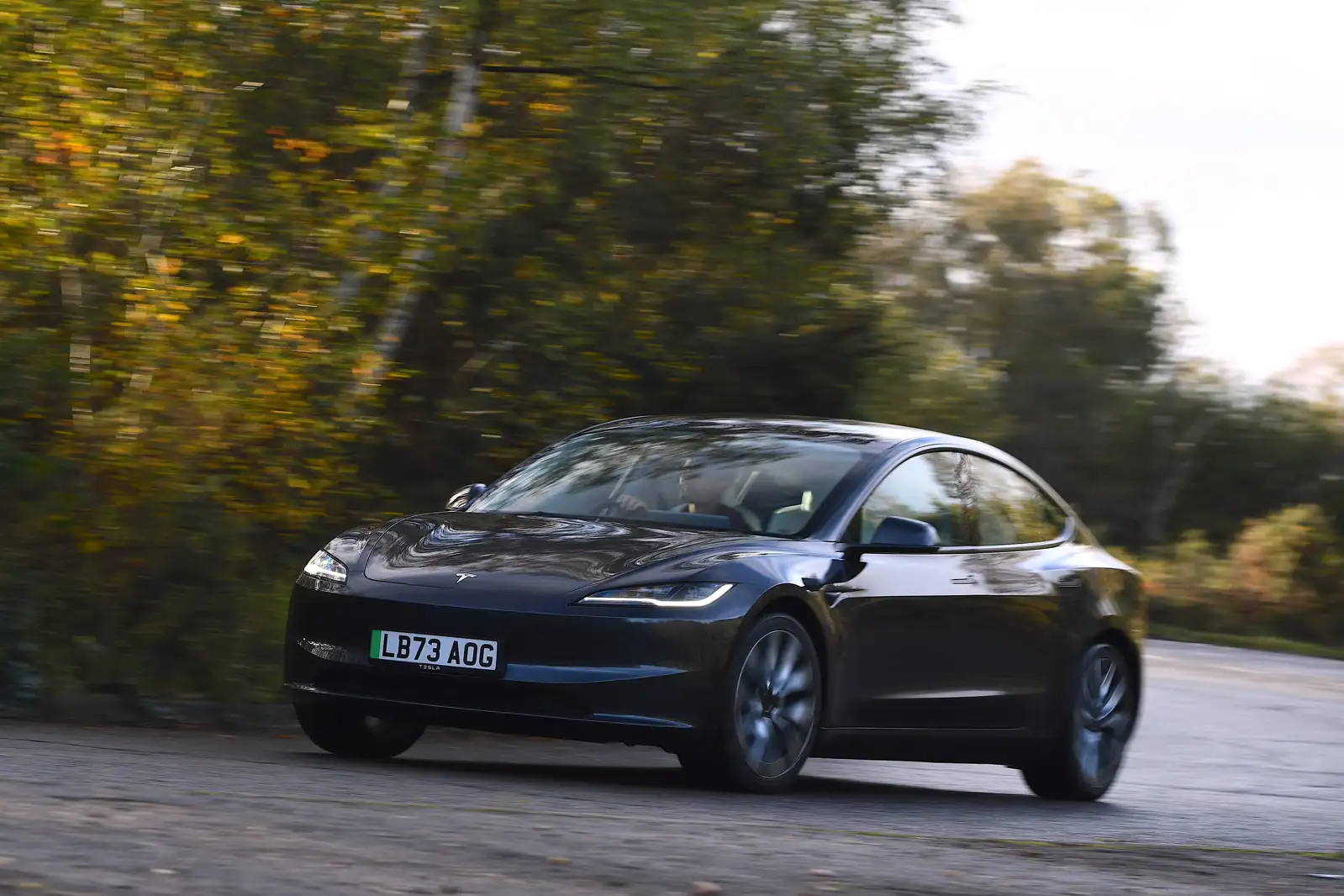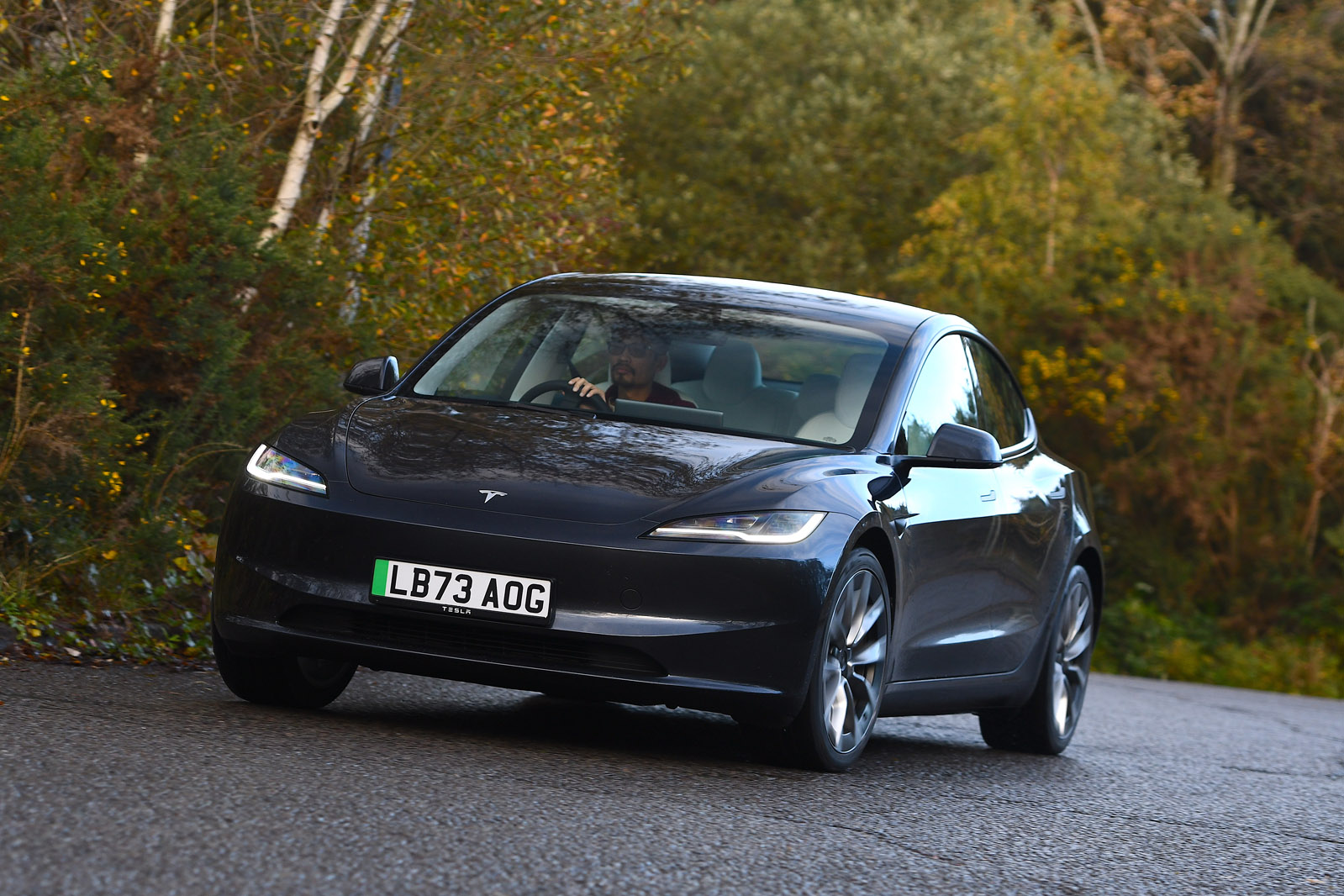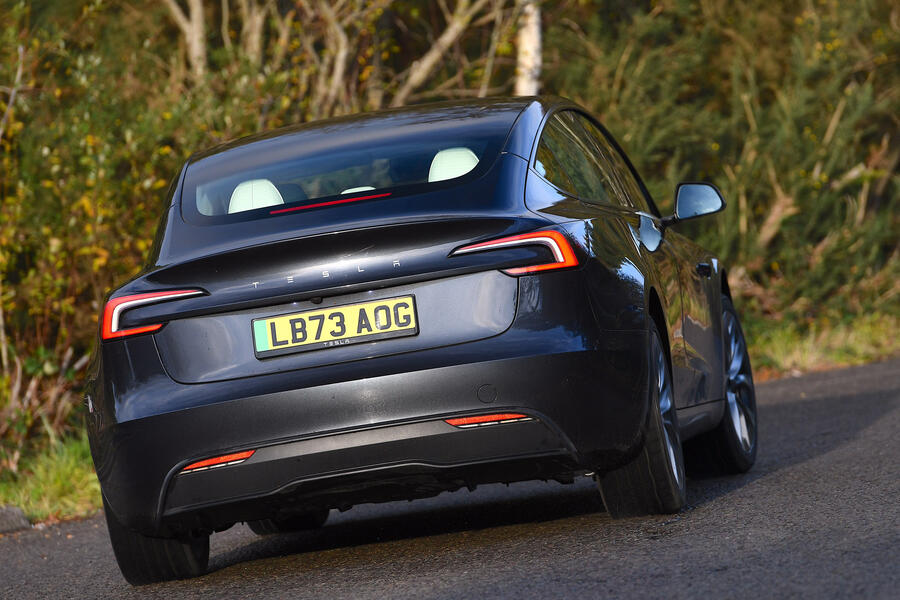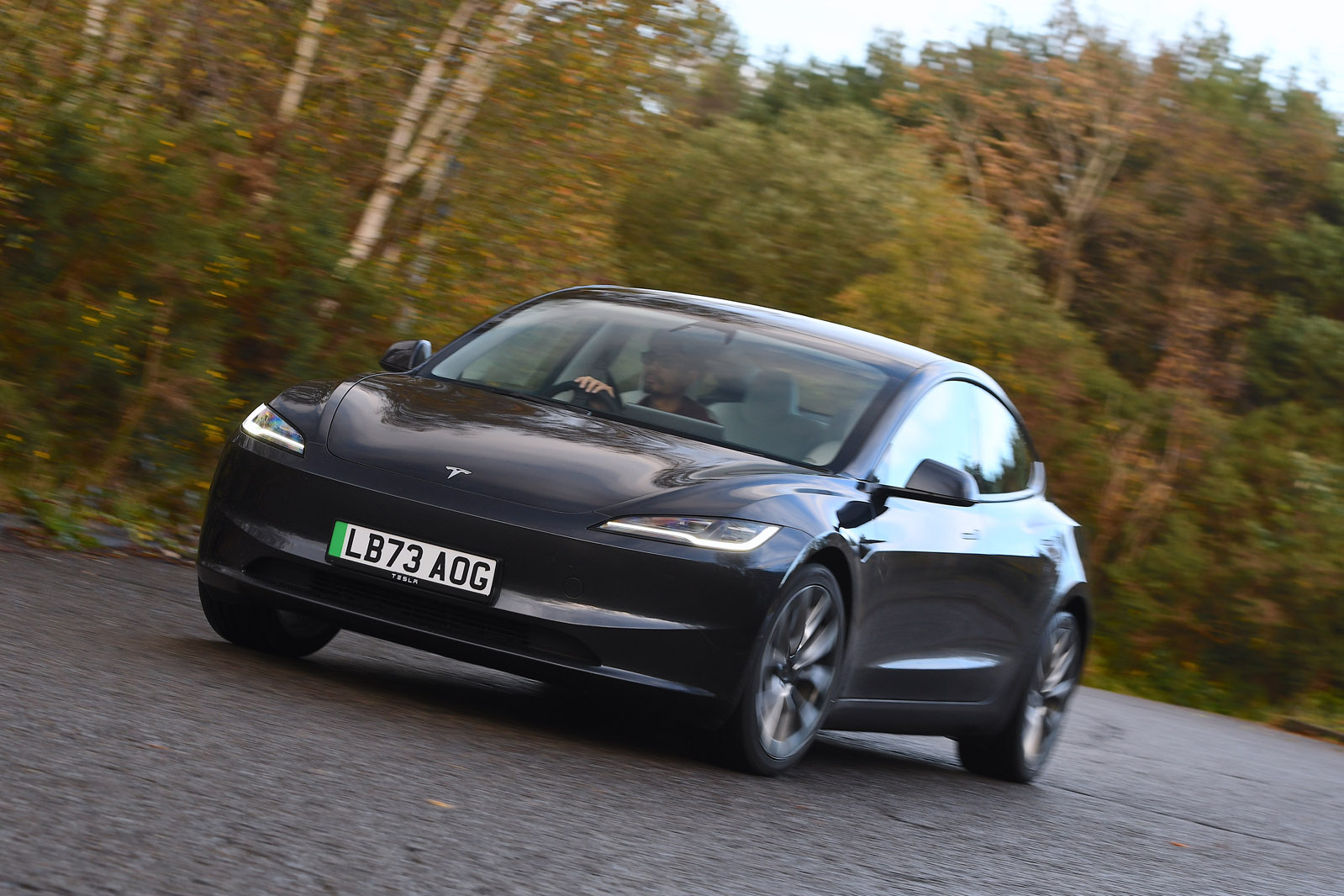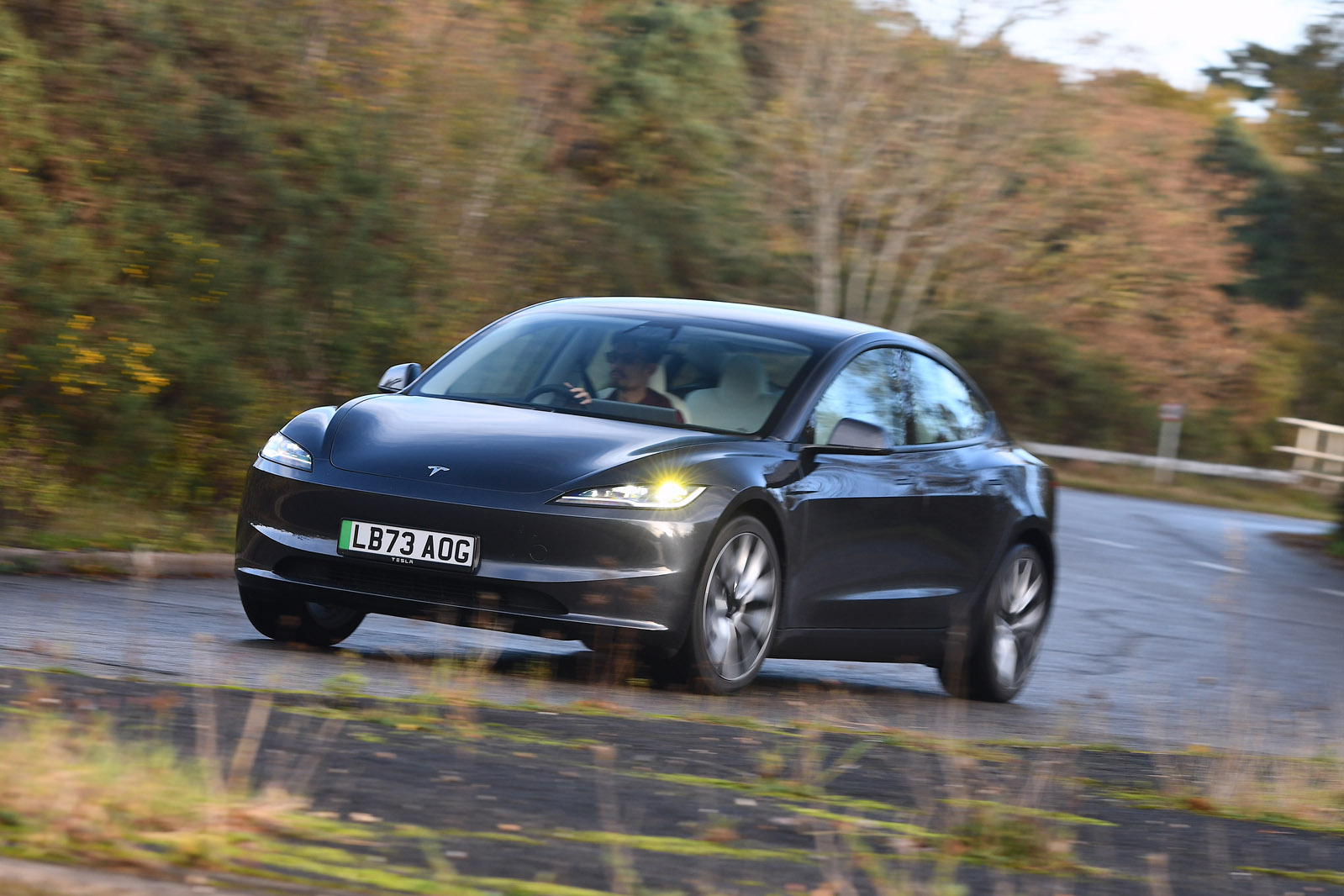As an example of how the principles of minimalism can be applied to the field of automotive interior design, you needn’t look much further than the Model 3. So extreme are the lengths to which Tesla’s designers have gone to remove as much switchgear from its cabin as possible that you can count the number of physical controls on one hand.
Crucially, for the latest car the column stalks have been consigned to the bin, with the indicators now operated from a touchpad on one of the steering wheel spokes and the wipers activated via the infotainment screen. No doubt these changes saved a few pennies in the production process, but they were clearly signed off by someone who thinks indicating on a roundabout is optional or that sudden downpours give you a few moments notice to fumble through a sub-menu.
The Model 3’s interior has also been upgraded in terms of materals and finish as part of the latest facelift, mostly to make it feel more upmarket. Overall the updates have worked, the Tesla finally having the premium chops to rival its upmarket combatants.
For instance, you can now personalise the top panel of the dashboard with inserts in a different colour or material, such as a grey textured fabric. The cupholders have gained a sliding lid, while an almost endlessly customisable strip of ambient lighting runs along the upper section of the doors and continues along the top of the dashboard. Crucially, it all feels more solidly screwed together, with almost none of the creaks and rattles that could afflict the old Model 3.
Elsewhere, oddment storage is plentiful and a combined luggage space of 682 litres (split between a small compartment at the front, the 'frunk' and a traditional rear boot) is certainly usable enough and more than the 480 litres you get from an ICE BMW 3 Series.
Two adults will fit in the second row in reasonable comfort, too. Vegan leather and glossy piano black trim do a convincing job of lifting the Model 3’s material appeal, but there’s still work to be done to truly match the best that Audi, BMW and Mercedes-Benz have to offer.
The enormous, 15.4in touchscreen slap-bang in the middle of the pared-back, slimline dashboard is used to control and adjust practically every aspect of the Model 3. From the wing mirrors, to the steering wheel position, to the sat-nav, headlights, cruise control and windscreen wipers – all are operated through screen or thumb-wheels on the steering-wheel spokes.
There’s no instrument binnacle, either. That job has also been given to the touchscreen, which means an awkward glance to the left (in right-hand drive cars) to get a look at your speed.
Such an approach to cabin architecture does take some getting used to. But once you’ve learned your way around the various sub-menus and figured out what everything does, it works well enough – if not perfectly. By using the screen not only as a means of controlling most of the car’s features but also as a medium for displaying important driving information, there is inevitably a heightened need to remove your eyes from the road that isn’t always comfortable.
Multimedia system
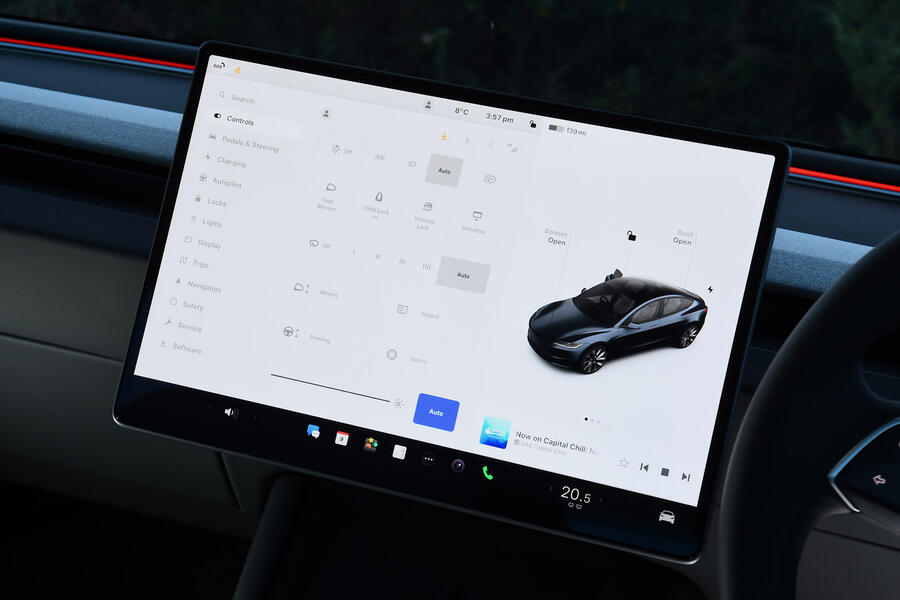
As you’d expect from a Tesla, its infotainment system feels as though it has been lifted straight out of Silicon Valley. The 15.4in screen may seem almost comically large, but credit where it’s due: it’s difficult not to be impressed by the quality of its graphics and the slick manner in which it operates.
Unlike with rival systems, you rarely need to tap twice to access a function or menu, while on the whole the layout is logical and easy to follow, which is a good thing when you consider it’s used to operate everything from the windscreen wipers to the heating, ventilation and air conditioning. Even so, a few physical control for the most frequently used functions wouldn't go amiss.
At least it isn’t short on toys, not in the literal sense at least. In addition to features such as sat-nav, Bluetooth and DAB radio – the sort of things you’d expect from a circa-£40,000 compact saloon – there are some more, let’s say surprising, features. Such as a digital whoopee cushion and a full suite of arcade-style games. The genuinely useful Apple CarPlay and Android Auto remain absent, however.
For the latest version of the Model 3, rear-seat passengers can get in on the infotainment action, thanks to the addition of an 8.0in touchscreen mounted between the front seats. From here occupants can adjust the air-con as well as access various multimedia functions. Moreover, there are also a pair of 65W USB-C ports that allow rapid charging of devices from smartphones to laptops.


